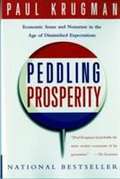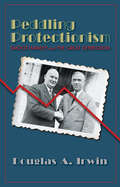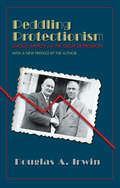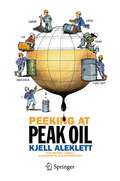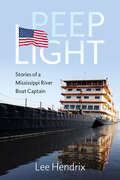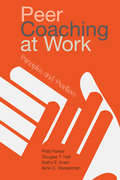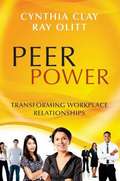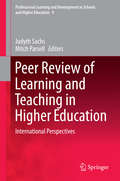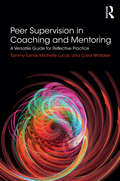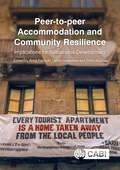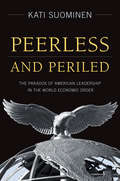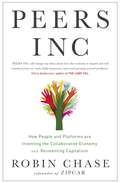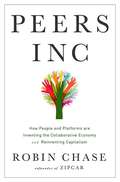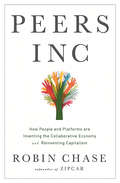- Table View
- List View
Pebble: Wearables Pioneer
by David B. Yoffie Allison M. CiechanoverIn the summer of 2016, wearables 'wunderkind' and Pebble founder and CEO, Eric Migicovsky, was pleased with the young startup's success in the five years since its founding. The Silicon Valley-based company had recently shipped its two millionth smartwatch; held the record for three of the four highest Kickstarter campaigns ever (raising cumulatively over $40 million on the site); launched its first non-watch product dubbed a "wearables game changer;" and enjoyed a loyal customer base, particularly among technology early adopters and the community of software developers that created applications and watch faces for its products. Nonetheless, the young company faced a variety of challenges. The nascent smartwatch industry recently saw a dramatic uptick in competition. Apple had introduced its smartwatch the prior year; other established technology companies such as Samsung and Motorola offered smartwatches; U.S.-based fitness tracker Fitbit had recently launched its first smartwatch; and Chinese firm, Xiaomi, was soon to release a low-priced smartwatch. Migicovsky considers an array of strategic options as he looks ahead.
Pedagogy and Partnerships in Innovative Learning Environments: Case Studies from New Zealand Contexts
by Elaine Khoo Noeline WrightThis book examines contexts and possibilities in Aotearoa New Zealand education contexts arising from the international trend for open, flexible, innovative learning environments (ILE), specifically on the pedagogical load. The book responds to questions such as: What does it mean to teach, learn or lead in an innovative learning environment? What happens when teachers move form single cell learning spaces to open, collaborative ones?The chapters provide examples of how teaching in new spaces can be an exciting challenge for teachers and students where they try new ways of teaching and learning, and rethink the purposes of learning and the implications of societal change for learning and what is valued. Examples are drawn from pre-service teachers working in primary and secondary schools and in-service teachers learning to become professionals.The book offers insights into a variety of educational contexts where teachers and students learn and adapt to new learning spaces, and also how different teaching and learning partnerships may be conceived, and flourish. It focuses attention on a range of aspects that teachers, school leaders, and other educators, and researchers may find valuable when they embark on similar initiatives to consider issues pivotal to productive and effective innovative learning environment design, development and implementation.
Peddling Panaceas: Popular Economists in the New Deal Era
by Gary DeanAs the Great Depression dragged on without a recovery, Americans were avid for anything that would help them to understand its causes and possible solutions. During this period, orthodox economists were largely discredited, both in the White House and among the public. Three of the most popular and influential figures of the period - Edward A. Rumely, Stuart Chase, and David Cushman Coyle - were not trained in economics. In Peddling Panaceas, Gary Dean Best analyzes their remedies for the Depression, their proposals for permanent economic reform, and their influence. Each of these men represented a principal economic faction within the New Deal. The inflationists within the New Deal found support from the Committee for the Nation, which was largely the creation of Edward Rumely. Rumely's committee was influential in the early New Deal, but largely passed into eclipse by early 1934. The planners within the New Deal were represented in popular magazines and books by Stuart Chase, who was an engineer and accountant before he began to expound on economics. An early advocate of collectivism, Chase's influence waned after the Supreme Court invalidated two early successes, the NRA and the AAA. David Cushman Coyle, a structural engineer who, like many engineers during the Depression, fancied himself an economist, may be taken as the voice of the followers of Supreme Court Justice Louis Brandeis within the New Deal. Always influential, they became more prominent after the invalidation of the NRA in 1935. These three popular economists not only influenced policy but also educated the American public about the Depression. Scarcely a month went by without an essay by Chase or Coyle in the popular magazines of the decade, and both were also prolific authors of books and pamphlets. Their views and influence help us understand the economic and political climate of the 1930s. Peddling Panaceas will be of interest to economists, cultural historians, political scientists, and sociologists.
Peddling Prosperity: Economic Sense and Nonsense in the Age of Diminished Expectations
by Paul KrugmanThe past twenty years have been an era of economic disappointment in the United States. They have also been a time of intense economic debate, as rival ideologies contend for policy influence.
Peddling Protectionism
by Douglas A. IrwinThe Smoot-Hawley tariff of 1930, which raised U.S. duties on hundreds of imported goods to record levels, is America's most infamous trade law. It is often associated with--and sometimes blamed for--the onset of the Great Depression, the collapse of world trade, and the global spread of protectionism in the 1930s. Even today, the ghosts of congressmen Reed Smoot and Willis Hawley haunt anyone arguing for higher trade barriers; almost single-handedly, they made protectionism an insult rather than a compliment. In Peddling Protectionism, Douglas Irwin provides the first comprehensive history of the causes and effects of this notorious measure, explaining why it largely deserves its reputation for combining bad politics and bad economics and harming the U.S. and world economies during the Depression. In four brief, clear chapters, Irwin presents an authoritative account of the politics behind Smoot-Hawley, its economic consequences, the foreign reaction it provoked, and its aftermath and legacy. Starting as a Republican ploy to win the farm vote in the 1928 election by increasing duties on agricultural imports, the tariff quickly grew into a logrolling, pork barrel free-for-all in which duties were increased all around, regardless of the interests of consumers and exporters. After Herbert Hoover signed the bill, U.S. imports fell sharply and other countries retaliated by increasing tariffs on American goods, leading U.S. exports to shrivel as well. While Smoot-Hawley was hardly responsible for the Great Depression, Irwin argues, it contributed to a decline in world trade and provoked discrimination against U.S. exports that lasted decades. Peddling Protectionism tells a fascinating story filled with valuable lessons for trade policy today.
Peddling Protectionism: Smoot-Hawley and the Great Depression
by Douglas A. IrwinThe Smoot-Hawley tariff of 1930, which raised U.S. duties on hundreds of imported goods to record levels, is America's most infamous trade law. It is often associated with--and sometimes blamed for--the onset of the Great Depression, the collapse of world trade, and the global spread of protectionism in the 1930s. Even today, the ghosts of congressmen Reed Smoot and Willis Hawley haunt anyone arguing for higher trade barriers; almost single-handedly, they made protectionism an insult rather than a compliment. In Peddling Protectionism, Douglas Irwin provides the first comprehensive history of the causes and effects of this notorious measure, explaining why it largely deserves its reputation for combining bad politics and bad economics and harming the U.S. and world economies during the Depression. In four brief, clear chapters, Irwin presents an authoritative account of the politics behind Smoot-Hawley, its economic consequences, the foreign reaction it provoked, and its aftermath and legacy. Starting as a Republican ploy to win the farm vote in the 1928 election by increasing duties on agricultural imports, the tariff quickly grew into a logrolling, pork barrel free-for-all in which duties were increased all around, regardless of the interests of consumers and exporters. After Herbert Hoover signed the bill, U.S. imports fell sharply and other countries retaliated by increasing tariffs on American goods, leading U.S. exports to shrivel as well. While Smoot-Hawley was hardly responsible for the Great Depression, Irwin argues, it contributed to a decline in world trade and provoked discrimination against U.S. exports that lasted decades. Featuring a new preface by the author, Peddling Protectionism tells a fascinating story filled with valuable lessons for trade policy today.
Pediatric Metabolic Syndrome
by Sarah E. Messiah Steven E. Lipshultz Tracie L. MillerIn just under three decades, the world has witnessed an enormous rise in obesity with a parallel growth in cardiometabolic disease risk factors characterized by insulin resistance, dyslipidemia, and hypertension, together known as the metabolic syndrome - conditions previously unheard of in children and adolescents. During this time, we have little knowledge of the global and cumulative detrimental health effects of childhood obesity. As obese children age, not only will their health be negatively affected, but infertility and pregnancy complications associated with the metabolic syndrome will affect generations to come. The work force will undoubtedly be affected because of increased sick days and decreased work productivity. Identifying children and adolescents at the earliest stages of chronic disease onset should be the goal of clinical practice, yet there is no clear guidance for defining the risk of metabolic syndrome or appropriate risk-factor thresholds in these groups. If children are identified early in the disease process, lifestyle and clinical interventions can be instituted when they are potentially more effective. Pediatric Metabolic Syndrome: Comprehensive Clinical Review and Related Health Issues approaches the pediatric metabolic syndrome by elucidating its effects on specific organ systems and by considering the problem through understanding the social, psychological and economic consequences of it. The Editors have recruited an invited group of esteemed experts in the field to provide the most timely and informative approaches on how to deal with this health crisis. Through educating our practitioners, our future researchers, our health and community organizations, our legislators and our families and children, we have the best chance at improving the health trajectory of the next generation.
Pedigree
by Lauren A. RiveraAmericans are taught to believe that upward mobility is possible for anyone who is willing to work hard, regardless of their social status, yet it is often those from affluent backgrounds who land the best jobs. Pedigree takes readers behind the closed doors of top-tier investment banks, consulting firms, and law firms to reveal the truth about who really gets hired for the nation's highest-paying entry-level jobs, who doesn't, and why.Drawing on scores of in-depth interviews as well as firsthand observation of hiring practices at some of America's most prestigious firms, Lauren Rivera shows how, at every step of the hiring process, the ways that employers define and evaluate merit are strongly skewed to favor job applicants from economically privileged backgrounds. She reveals how decision makers draw from ideas about talent--what it is, what best signals it, and who does (and does not) have it--that are deeply rooted in social class. Displaying the "right stuff" that elite employers are looking for entails considerable amounts of economic, social, and cultural resources on the part of the applicants and their parents.Challenging our most cherished beliefs about college as a great equalizer and the job market as a level playing field, Pedigree exposes the class biases built into American notions about the best and the brightest, and shows how social status plays a significant role in determining who reaches the top of the economic ladder.
Peeking at Peak Oil
by Michael Lardelli Olle Qvennerstedt Kjell AleklettThe term "Peak Oil" was born in January 2001 when Colin Campbell formed the Association for the Study of Peak Oil & Gas (ASPO). Now, Peak Oil is used thousands of times a day by journalists, politicians, industry leaders, economists, scientists and countless others around the globe. Peak Oil is not the end of oil but it tells us the end is in sight. Anyone interested in food production, economic growth, climate change or global security needs to understand this new reality. In Peeking at Peak Oil Professor Kjell Aleklett, President of ASPO International and head of the world's leading research group on Peak Oil, describes the decade-long journey of Peak Oil from extremist fringe theory to today's accepted fact: Global oil production is entering terminal decline. He explains everything you need to know about Peak Oil and its world-changing consequences from an insider's perspective. In simple steps, Kjell tells us how oil is formed, discovered and produced. He uses science to reveal the errors and deceit of national and international oil authorities, companies and governments too terrified to admit the truth. He describes his personal involvement in the intrigues of the past decade. What happens when a handful of giant oil fields containing two thirds of our planet's oil become depleted? Will major oil consumers such as the EU and US face rationing within a decade? Will oil producing nations conserve their own oil when they realize that no one can export oil to them in the future? Does Peak Oil mean Peak Economic Growth? If you want to know the real story about energy today and what the future has in store, then you need to be "Peeking at Peak Oil".
Peep Light: Stories of a Mississippi River Boat Captain
by Lee HendrixMost people only consider the Mississippi River when they cross it or when it inconveniently abandons its banks. But every year, millions of tons of cargo are transported by towboats on the river. In Peep Light: Stories of a Mississippi River Boat Captain, Captain Lee Hendrix provides unique insight on people who work and live on and near the Mississippi River. Hendrix, formerly a pilot for the Delta Queen Steamboat Co., has worked on the Mississippi for fifty years, first as a towboat deckhand in 1972 and eventually as a pilot of towboats and passenger vessels. In 2014, Hendrix became captain of the towboat Mississippi with the US Army Corps of Engineers, then he later retired to return to passenger vessels. For Hendrix and others like him, he is at home on the river, living and dining with the same people they work with, working with familiar faces for years at a time and yet meeting new people every day.Demonstrating a fascination not only with the river but also with the passions and dreams of those who live and work on it, these stories range from personal reflections on aging, experiencing one’s first night on the river and the complex emotions that come with it, working on the deck, promotion to pilot, the characters working aboard these boats, and the history of the river itself. Peep Light unites humans with the river through engaging storytelling and sheds light on Hendrix’s rare experience along one of the most powerful and important waterways in the world.
Peer Coaching at Work: Principles and Practices
by Kathy E. Kram Douglas T. Hall Polly Parker Ilene C. WassermanWhen it comes to mentoring, peer coaching is an undervalued workhorse. It's effective, inexpensive, widely applicable, and relatively easy to implement. Many coaches consider it to be the next wave in professional development. Peer Coaching at Work draws on research and practice to deliver a hands-on guide to this powerful relational learning technique. The authors—all leaders in the field—present a rigorously tested three-part model for facilitating peer coaching relationships in one-on-one settings and in larger groups. With lively case studies, they define peer coaching as a focused relationship between equals who supportively learn from, actively listen to, and judiciously question each other, which leads to breakthroughs that may otherwise lie dormant in one's career. A fundamental guide for anyone with an interest in mentoring and transformational learning, this book is a must-have for the talent management bookshelf.
Peer Influence Analysis: Using Social Technologies to Identify Your Business's Most Influential Customers
by Josh Bernoff Ted SchadlerWithin social networks, consumers create 256 billion impressions on one another every year-just by talking about products and services. What are you doing to make these impressions work for you? What are you doing to stop them from working against you? You need to think about individuals as potential sources of marketing influence, both positive and negative. In this chapter, authors Josh Bernoff-coauthor of "Groundswell"-and Ted Schadler lay out a four-step game plan-called IDEA-for energizing your customers: 1) Identify mass influencers, 2) deliver groundswell, social-media-based customer service, 3) empower customers with mobile information, and 4) amplify fan activity. The chapter focuses on the Identify step, explaining how companies should analyze their mass influencers-the less than 14% of adults who account for 80% of all online influence impressions and posts. Using case studies from United Airlines and Ford, you will learn the difference between "mass connectors," who have the most influence in social networks, and "mass mavens," who have the most influence in content channels (such as blogs), and how to work proactively to get them sharing messages that are in line with your strategy. This chapter was originally published as Chapter 3 of Empowered: Unleash Your Employees, Energize Your Customers, and Transform Your Business
Peer Power
by Ray Olitt Cynthia ClayDeveloped for training, HR, and OD professionals, this book provides the keys to effective interpersonal collaboration. Building on a foundation of four principles (Be Real, Extend Respect, Take Responsibility, and Build Relationships). Readers will learn how to apply five strategies (Collaborating, Going Head-to-Head, Compromising, Coaching, and Caring-for-Self) at the moment of need (a deteriorating relationship with a coworker or boss) and discover how to win support from others and manage difficult behavior when conflict arises. They describe several familiar and troublesome 'mistakes' workmates often make, then help us avoid them by applying four essential principles and five key strategies.Features content to deepen the readers' understanding of each concept and strategy with real life examples along with questionnaires at the end of each case chapter. Peer Power tells relevant stories, gives concrete examples of solutions, and provides real tools to repair relationships with these individuals. Practicing these tools improves effectiveness, reduces stress levels, helps build our company and makes this a better place to work.Chapter 1 looks at interpersonal behaviors that most of us have tried but don't work. Chapter 2 introduces the four key principles for effective communication. Chapter 3 dives into the five strategies for solving interpersonal problems. In the nine chapters that follow, the book tackles a challenging character at workThe attacker (the colleague who repeatedly expresses his anger and frustration in the form of inappropriate personal criticism)The whiner (that coworker who complains without taking responsibility for improving conditions that surround her)The scene stealer (the peer who sets about building her reputation at your expense)The drive-by boss (a leader who ignores some of his key management responsibilities and doesn't meet the needs of his employees or the organization)The manipulator (the coworker who attempts to influence your attitude or behavior through deception or secrecy)The clueless colleague (a coworker who is insensitive to her negative impact on the work environment)The faux-smart boss (the boss who has unrealistic confidence in his own ideas and skills, often accompanied by a lack of confidence in his employees)The slacker (the coworker whose poor performance damages your performance)The bully (a colleague who uses unreasonable demands and inappropriate threats to get her way)For a quick road map, readers can turn to the cheat sheet at the end of each of these chapters. Each case chapter includes clues to look for, assumptions to remember, and principles and practices to use. For actual dialogue, the authors have added scripted responses to various tough cases. The book is designed for readers to use this book to develop practical strategies to get results.
Peer Review für wissenschaftliche Fachjournale: Strukturierung eines informativen Reviews (essentials)
by J. Matthias StarckJ. Matthias Starck führt den Leser in diesem essential durch alle Schritte des Schreibens eines Peer Reviews für eine wissenschaftliche Zeitschrift. Es baut auf einer prägnanten Analyse auf, wie Wissenschaft funktioniert, wie sie kommuniziert und wie sie veröffentlicht wird. Der Autor diskutiert verschiedene Peer-Review-Verfahren und deren mögliche Alternativen, ethische Leitlinien ebenso wie die ,dunklen Seitenʻ des wissenschaftlichen Publizierens. Damit hilft dieses essential dem Leser, im bestehenden System erfolgreich zu arbeiten sowie zu seiner weiteren Entwicklung und Verbesserung beizutragen.
Peer Review of Learning and Teaching in Higher Education
by Judyth Sachs Mitch ParsellIncorporating both theoretical and practical perspectives, this volume of papers explores varied aspects of peer review of teaching in higher education. The section on theory features contributions from academics based in Europe, North America and Australia. It provides a number of models demonstrating ways in which collegial peer commentary can enhance the quality of learning and teaching. The chapters examine in detail the importance of communication and leadership, and deploy evidence from one-on-one interviews that evince the value of considering collegiality, emotions, attitudes, and spaces in peer review. The analysis shows how these factors are central to the ways in which lecturers and teachers communicate with each other to create constructive opportunities for learning. The chapters on practical considerations detail the peer review process and include case studies from institutions in Africa, Europe, North America and Australia, which focus on different areas of the topic, including peer review as a quality assurance mechanism, peer review in distance education, peer review in foundation courses, and peer review embedded within a department and across a university. The book ends with an international perspective on the role of peer review in ensuring a holistic approach to quality enhancement in learning and teaching.
Peer Supervision in Coaching and Mentoring: A Versatile Guide for Reflective Practice
by Tammy Turner Carol Whitaker Michelle LucasSupervision is increasingly required for a coach’s and a mentor's professional development, and engaging in reflective practice with peers can be a valuable way of meeting these needs. Peer supervision brings unique challenges though, including the possibility of collusion or stagnating at a shared developmental level. This book is written by practicing professional supervisors who engage in peer supervision themselves and train communities of coaches and mentors. It guides practitioners to develop and integrate their range of individual and group reflective practice activities alongside professional supervision. It draws upon essential theory and methodology, explores challenges and ethical dilemmas faced within peer supervision, and provides concrete guidance, useful techniques and helpful templates. This practical guide will be vital reading for individual coaching and mentoring practitioners and peer learning groups including within communities, universities and/or training programs. It will also support professional supervisors and organizations developing coaching cultures.
Peer-to-Peer File Sharing and the Market for Digital Information Goods
by Ramon Casadesus-Masanell Jordan Mitchell Andres HervasAs of 2005, over 10 million people were using peer-to-peer (P2P) file-sharing networks to swap music, movies, and software for free. P2P software programs such as Kazaa, Limewire, and eDonkey received a great deal of media attention. Music and movie industry organizations believed that downloading copyrighted material was stealing. The same industry associations took the P2P companies to court, maintaining that the P2P software developers should be held responsible when users unlawfully copied copyrighted songs, movies, and television programs. P2P software creators claimed that they were merely promoting a technology with multiple uses. Indeed, P2P was a network architecture that could be deployed to a number of other applications, such as distributed computing, instant messaging, voice telephony, spam filtering, and other commercial activities. In the midst of high-profile battles between the entertainment industry and P2P file-sharing software developers, a number of proprietary systems offering legal downloads had emerged. Entertainment industry supporters pointed to Apple's iTunes .99 cent download fee per song as an indicator of the future. Although iTunes satisfied entertainment industry executives that it was possible to pay for downloads successfully, the battle between proprietary systems and P2P file sharing seemed to continue. Who would win in the long run?
Peer-to-Peer Leadership: Why the Network Is the Leader
by Mila N. BakerOur leadership models are stuck in an Industrial Age, top-down mentality. But in our complex, data-drenched, 24/7 world, there is simply too much information coming from too many different directions too quickly for any one leader or group to stay on top of it. Hierarchy is breaking down everywhere—why should leadership be any different? Inspired by the peer-to-peer model of computing used in social networking and crowdsource technologies, Mila Baker shows a new way to lead. Organizations, she says, must become networks of "equipotent" nodes of power—peer leaders. The job of the leader is now to set the overall goals and direction and optimize the health of that network, not tell it what to do. In these organizations, leadership roles shift rapidly to fit the needs of any given situation. Information flows freely so those who need it can find it easily and act on it immediately. Feedback becomes an organic part of the workflow, enabling rapid course corrections. Baker shows how companies like Gore and Herman Miller have achieved long-term success practicing these principles and provides a structure that any organization can adapt to build flexibility, resiliency, and accountability.
Peer-to-Peer Lending with Chinese Characteristics: Development, Regulation and Outlook (China Perspectives)
by Shanghai Finance P2P Research GroupLiterature on China's finance in the West has focused on "financial repression" in its highly regulated financial markets. However, fundamental changes in China's financial system are underway and China's peer-to-peer (P2P) lending is now the largest in the world. <P><P> This book uses exclusive researches, interviews and surveys to bring readers a clear picture of the rapidly developing P2P lending industry in China. It is comprised of two parts. The first part is a comprehensive analysis of China's P2P lending industry. It outlines the factors behind the meteoric rise of P2P lending in China, and also the challenges its rapid rise has posed. The second part is a panoramic survey of China's P2P lending industry with study of typical cases, which could also provide reference to the analysis in the first part. Besides, it introduces the existing relevant regulations, regulators, likely upcoming regulatory measures as well as the diverse body of new financial institutions appearing with the development of the industry, to analyse in-depth the current functioning of the industry in China and its lending practices through a large scale survey.
Peer-to-peer Accommodation and Community Resilience: Implications for Sustainable Development
by Brian Jones Antonio Paolo Russo Szilvia Gyimóthy Jeroen A. Oskam Cristina Miguel Bailey Ashton Adie Alberto Amore Cecilia De Bernardi David Albarran Maria del Alonso-Almeida Katerina Antoniou Fani Efthymiadou Olga Gjerald Chiga Hayakawa Antonios Kaniadakis Christoph Lutz Filip Majetic Ingeborg Matecic Javier Macías Mendoza Rodrigo Perez-Vega Michael Röslmaier Dimitrios Stergiou Helena Tolic Jinghua XieThe growth of peer-to-peer (P2P) accommodation has been remarkable. However, the rapid expansion of the phenomenon has yielded several concerns over its potentially negative economic, social and environmental impacts. These impacts are highlighted in policy agendas as an emerging problem encountered by many local communities in destinations experiencing a boom in P2P accommodation. Specifically, concerns have been raised over the impact of the growth of P2P accommodation on local housing markets, residents' well-being and the environment as a result of the touristification of residential areas. In fact, many observers accuse P2P accommodation of fuelling the 'overtourism' problem that several destinations face. This edited book addresses the need to examine the P2P accommodation phenomenon from a community resilience lens. In particular, through a collection of chapters presenting a range of empirical and conceptual perspectives from urban and rural communities, the book considers the implications of P2P accommodation growth on the resilience of local communities and the sustainable development of places. This book highlights: · The rapid growth of P2P accommodation yields economic, social and environmental negative impacts on destinations. · The P2P accommodation sector is evolving towards professionalization which, in turns, creates further implications for local community resilience. · This book draws attention towards the need to examine the nexus between P2P accommodation, sustainability and local community resilience. · The collection of chapters presents empirical and conceptual perspectives from urban and rural communities. · Chapters impart significant insights to policymakers, practitioners and academics in light of the COVID-19 pandemic.
Peerless and Periled: The Paradox of American Leadership in the World Economic Order
by Kati SuominenAs the world economy emerges from the financial crisis, critics are announcing an end of the American era. The United States is said to be in an inexorable decline, and the expectation for the 21st century is for China to eclipse America and for the contours of global governance to blur. The loss of America's preeminent status will undercut our sway abroad and our safety and standard of living at home. But is America really done? Is the American era really over? In this provocative account, based on interviews with senior policymakers and cutting-edge research, Kati Suominen argues that talk of the end of Pax Americana is more smoke than fire. The international crisis did not fundamentally change the way the world is run. The G20 is but an American-created sequel to the G8, the US dollar still reigns supreme, and no country has resigned from the US-built, post-war financial institutions like the International Monetary Fund. This continuity reflects an absence of alternatives; there are no rival orders that would match the growth and globalization generated by leaving the United States at the helm. But Washington has no time for complacency. The American order is peerless, but it is also imperiled. To transcend this critical moment in history, the United States must step up and lead. Only America can uphold its order. In an interdependent world economy of rising powers, the US must stand for strategic multilateralism: striking deals with pivotal powers to tame destabilizing financial imbalances, securing free and fair markets abroad for US banks and businesses, and transforming the IMF and emerging Asian and European financial schemes into rapid responders to instability.
Peers Inc: How People And Platforms Are Inventing The Collaborative Economy And Reinventing Capitalism
by Robin ChaseRenting your spare room via AirbnbSelling jewellery you've made on Etsy Learning a new language on DuoLingo Sending a message with WhatsAppFinding a date on TinderThese activities are all made possible by the new collaborative economy, and they are all examples of Peers Inc companies.A revolution has been happening in business. People are coming together with corporations to redefine how businesses work, transforming capitalism along the way. New web-enabled platforms (the Inc) are making it possible for peers to realise the potential of their excess capacity (their spare room, smartphones, experiences, free time or networks) to create exciting new ways to work and succeed.In this path-breaking book Robin Chase, co-founder of Zipcar, shows how Peers Inc companies are unlocking the power of the collaborative economy. And further she demonstrates how this revolution is extending beyond business, changing government and legacy companies and its potential to help solve large scale social problems - from disappearing jobs to climate change.
Peers Inc: How People and Platforms Are Inventing the Collaborative Economy and Reinventing Capitalism
by Robin ChaseWhen Robin Chase cofounded Zipcar, she not only started a business but established the foundation for one of the most important economic and social ideas of our time: the collaborative economy. With this important book, she broadens our thinking about the ways in which the economy is being transformed and shows how the Peers Inc model is changing the very nature of capitalism. When the best of people power is combined with the best of corporate power to form "Peers Inc" organizations, a potent creative force is released. The "Inc" in these collaborations delivers the industrial strengths of significant scale and resources, and the "Peers" bring together the individual strengths of localization, specialization, and customization, unlocking the power of the collaborative economy. When excess capacity is harnessed by the platform and diverse peers participate, a completely new dynamic is unleashed. In Peers Inc, Robin Chase brings her provocative insights to work, business, the economy, and the environment, showing: *How focusing on excess capacity transforms the economics of what's possible and delivers abundance to all *How the new collaboration between the Inc and the Peers enables companies to grow more quickly, learn faster, and deliver smarter products and services *How leveraging the Peers Inc model can address climate change with the necessary speed and scale *How the Peers Inc model can help legacy companies overcome their shortening life cycle by inviting innovation and evolution *Why power parity between the Peers and the Inc is a prerequisite for long-term success *How platforms can be built within the existing financial system or outside of it *What government can do to enhance economic possibility and protect people working in this new decentralized world Chase casts a wide net, illuminating the potential of the Peers Inc model to address broader issues such as climate change and income inequality, and proves the impact that this innovative economic force can have on the most pressing issues of our time.
Peers Inc: How People and Platforms Are Inventing the Collaborative Economy and Reinventing Capitalism
by Robin ChaseWhen Robin Chase cofounded Zipcar, she not only started a business but established the foundation for one of the most important economic and social ideas of our time: the collaborative economy. With this important book, she broadens our thinking about the ways in which the economy is being transformed and shows how the Peers Inc model is changing the very nature of capitalism. When the best of people power is combined with the best of corporate power to form "Peers Inc” organizations, a potent creative force is released. The "Inc” in these collaborations delivers the industrial strengths of significant scale and resources, and the "Peers” bring together the individual strengths of localization, specialization, and customization, unlocking the power of the collaborative economy. When excess capacity is harnessed by the platform and diverse peers participate, a completely new dynamic is unleashed. In Peers Inc, Robin Chase brings her provocative insights to work, business, the economy, and the environment, showing: *How focusing on excess capacity transforms the economics of what’s possible and delivers abundance to all *How the new collaboration between the Inc and the Peers enables companies to grow more quickly, learn faster, and deliver smarter products and services *How leveraging the Peers Inc model can address climate change with the necessary speed and scale *How the Peers Inc model can help legacy companies overcome their shortening life cycle by inviting innovation and evolution *Why power parity between the Peers and the Inc is a prerequisite for long-term success *How platforms can be built within the existing financial system or outside of it *What government can do to enhance economic possibility and protect people working in this new decentralized world Chase casts a wide net, illuminating the potential of the Peers Inc model to address broader issues such as climate change and income inequality, and proves the impact that this innovative economic force can have on the most pressing issues of our time.
Pellagra and Pellagrous Insanity During the Long Nineteenth Century (Mental Health in Historical Perspective)
by David Gentilcore Egidio PrianiThis open access book explores the history of pellagra, a vitamin deficiency disease brought about by a shift in agriculture to maize, and which was first identified in Italy in the 1760s. With a focus on the insanity that was caused by the disease, the authors examine how thousands of patients were treated in Italian psychiatric asylums, shedding light on the sufferer’s point of view. Setting pellagrous insanity in a wider context of man-made or societal (anthropogenic) disease, where poverty, diet and disease meet, the book contributes to the history of medicine and science, the history of psychiatry, economic and social history, agrarian history, and food and nutrition history. Additionally, the authors aim to transnationalise Italian history by making comparisons with related issues, such as tertiary syphilis in the UK. Drawing from a wide range of printed and archival sources, including the writings of Italian medical investigators, the book examines how medical and scientific research was carried out during the long nineteenth century and the uncertainties that this engendered, in terms of classification, explanation, diagnosis and treatment. Offering a unique perspective on an endemic illness which came to be known as the disease of the four ds: dermatitis; diarrhea; dementia; and death, this book provides an engaging account of one of the most perplexing causes of mental illness.



